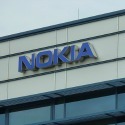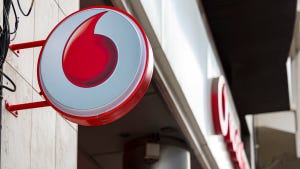
Profits crashed at Nokia's networks business in the second quarter of the year, with the Finnish equipment vendor indicating market conditions in North America will not show a big improvement until the final three months of 2018.
The operating profit at the networks division, which accounts for almost 90% of Nokia Corp. (NYSE: NOK)'s sales, tumbled to just €69 million ($81 million), from €406 million ($476 million) in the year-earlier quarter, missing analyst forecasts.
The result sent Nokia's share price down 9% during morning trading in Helsinki. At about €4.60 ($5.40), the company's share price has fallen nearly 14% in the last year.
The setback came despite flattish sales of network products: Revenues at the business fell 6%, to about €4.7 billion ($5.50 billion), but Nokia said there would have been no change on a constant currency basis.
Q2 2018 | Q2 2017 | YoY change | |
Net sales | 5,318 | 5,629 | -6% |
−Networks | 4,693 | 4,971 | -6% |
−Technologies | 361 | 369 | -2% |
−Group common and other | 278 | 307 | -9% |
Gross profit | 2,038 | 2,350 | -13% |
Gross margin | 38.3% | 41.7% | -3.4 percentage points |
Operating profit | 334 | 574 | -42% |
−Networks | 69 | 406 | -83% |
−Technologies | 292 | 230 | -27% |
−Group common and other | -27 | -62 | 56% |
Operating margin | 6.3% | 10.2% | -3.9 percentage points |
Profit for the period | 139 | 441 | -68% |
Source: Nokia. |
Nokia provided little explanation for the sharp decline in the networks operating margin, which shriveled from 8.2% a year earlier to as little as 1.5%.
"Business and regional mix continued to have some impact on gross margin, as did near-term actions of a small number of large customers funding their 5G entry within their existing budget plans," said Rajeev Suri, Nokia's CEO, in a statement.
Despite the upset on profitability, Nokia is clinging to its target of realizing a 6-9% networks operating margin for the full year. (See Nokia Tumbles on Weak Results, Insists Good 5G Times Lie Ahead.)
It says it is on track to realize cost savings of about €1.2 billion ($1.4 billion) this year compared with 2015 (including both Nokia and the Alcatel-Lucent business it acquired in 2016), although market watchers may wonder if the savings program is sufficiently aggressive, given today's results.
While Nokia does not break out details of headcount in today's statement, employee numbers appeared to have risen to 103,000 at the end of 2017, from 101,000 a year earlier. Swedish rival Ericsson AB (Nasdaq: ERIC) has slashed 20,500 jobs since the end of 2016, leaving it with about 108,000 (including contractors) in June.
Nokia continues to guide for an improvement in market conditions in the second half of the year, as various customers gear up for the rollout of next-generation 5G networks.
However, in an update to earlier commentary, it said "particular acceleration" in North America would not happen until the very last quarter. "We expect market conditions to improve further in the second half, particularly in Q4, Nokia's seasonally strongest quarter, and as 5G accelerates significantly," said Suri.
Like Ericsson, Nokia has started to plug radio access network (RAN) products that can be "software-upgraded" to support 5G technology as and when it becomes available.
Sales of its AirScale platform, which competes against the Ericsson Radio System, are "growing fast," according to Suri. He also claimed that 40% of Nokia's sales pipeline is now made up of "end-to-end" deals. "That is the highest level we have seen to date," he said.
Nokia's strength in the core and IP network areas gives it one possible advantage over Ericsson, which has struggled to execute a turnaround at its digital services business.
For all the latest news from the wireless networking and services sector, check out our dedicated mobile content channel here on Light Reading.
During an interview with Light Reading last week, Helena Norrman, Ericsson's chief marketing officer, said that division could not be ignored because a "complete" 5G network would need to include a virtualized core and OSS (operational support system) components, for which digital services is responsible. (See Ericsson's R&D Workout Piles 5G Pressure Onto Rivals.)
Yet Ericsson's recent networks performance stands in sharp contrast to Nokia's. Following hefty cuts to the workforce and a bigger investment in research and development, the Swedish vendor edged into profitable territory for the first time in nearly two years in its recent second quarter. (See Ericsson Back in Profit After Fierce Cuts & 5G Action.)
Reported sales at Ericsson's networks business were up 2%, to SEK32.4 billion ($3.7 billion), after declining 9.5% a year earlier, and its operating margin of 10.9% looks very healthy alongside Nokia's 1.5%.
Moreover, while Ericsson has boosted R&D spending, Nokia's investments in this area have dipped slightly. In the second quarter, the Finnish vendor's networks division spent €911 million ($1.1 billion) on R&D, down from €916 million a year earlier.
Expecting its main addressable market to shrink by 1-3% this year, Nokia has turned its attention to other sectors, such as the energy and transportation markets. (See Nokia to Create Standalone Software Biz, Target New Verticals.)
Sales in these markets were up 30% year-on-year, said the company, without disclosing details. The headline performance, however, suggests their contribution remains relatively small.
A deeper dive into Nokia's numbers shows that sales of fixed and mobile broadband equipment fell in all regions bar North America, where they rose 6%, to €831 million ($974 million). Both Ericsson and Nokia believe North American service providers have a bigger appetite for investment in 5G than operators in other regions.
Ignoring geographical distinctions, however, Nokia's only real bright spot from a product perspective was the optical networks business, where sales were up 8%, to €365 million ($428 million). Much of the demand in this area came from the large enterprise and Internet companies that Nokia is targeting as part of its diversification strategy.
Following the disappointing performance at the networks business, net income for the entire business fell 68%, to just €139 million ($163 million).
The result would have been worse but for an improvement at Nokia Technologies, the company's licensing business, which reported a 27% increase in operating profit, to €292 million ($343 million), even though sales fell 2%, to €361 million ($423 million).
— Iain Morris, International Editor, Light Reading
About the Author(s)
You May Also Like











